Related Research Articles

The Bangash, Bungish, Bangaš or Bangakh are a tribe of Pashtuns, inhabiting their traditional homeland, historically known as Bangash district, which stretches from Kohat to Tall in Hangu and Spīn Ghar in Khyber Pakhtunkhwa, Pakistan. They also live as a smaller population in Gardez Paktia, Afghanistan. The Bangash are also settled in large numbers in Uttar Pradesh, India, especially in the city of Farrukhabad, which was founded in 1714 by Nawab Muhammad Khan Bangash.

Shuja-ud-Daula was the Subedar and Nawab of Oudh and the Vizier of Delhi from 5 October 1754 to 26 January 1775.
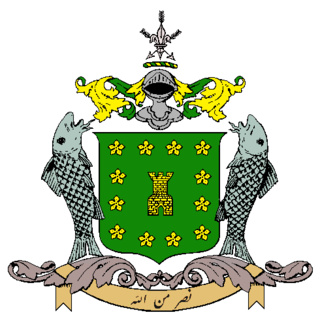
The Nawabs of Bhopal were the Muslim rulers of Bhopal, now part of Madhya Pradesh, India. The nawabs first ruled under the Mughal Empire from 1707 to 1737, under the Maratha Empire from 1737 to 1818, then under British rule from 1818 to 1947, and independently thereafter until it was acceded to the Union of India in 1949. The female nawabs of Bhopal held the title Nawab Begum of Bhopal.

Shahjahan Begum was the Nawab Begum of Bhopal for two periods: 1844–60, and secondly during 1868–1901.

Bhopal State was an Islamic principality founded in the beginning of 18th-century India by the Afghan Mughal noble Dost Muhammad Khan. It was a tributary state during 18th century, a princely salute state with 19-gun salute in a subsidiary alliance with British India from 1818 to 1947, and an independent state from 1947 to 1949. Islamnagar was founded and served as the State's first capital, which was later shifted to the city of Bhopal.
Nawab Sir Ahmed Hussain, Amin Jung Bahadur, KCIE, CSI, LLD (Osmania), MA, BL (Madras) was born in Madras on 11 August 1863 in the family of a leading businessman.
Begum Noor Bano served as a Member of Parliament in the 11th Lok Sabha and 13th Lok Sabha, lower house of parliament of India. She was elected from Rampur on the ticket of Indian National Congress party.
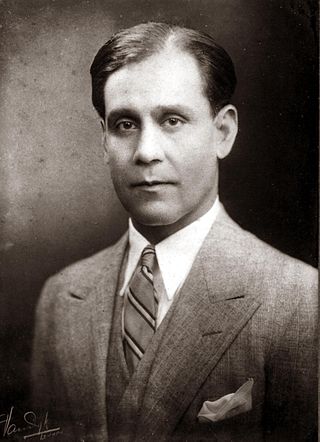
Hamidullah Khan was the last ruling Nawab of the princely salute state of Bhopal. He ruled from 1926 when his mother, Begum Kaikhusrau Jahan Begum, abdicated in his favor, until 1949 and held the honorific title until his death in 1960. A delegate to the Round Table Conference in London, he served as Chancellor of the Chamber of Princes from 1944–1947, when India became independent.
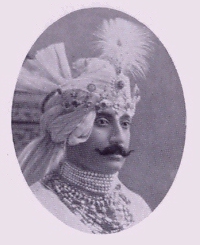
Sayyid Sir Wasif Ali Mirza Khan Bahadur was the Nawab of Murshidabad during 1906–1959. Sir Wasif Ali Mirza was educated at Sherborne School, Rugby School and later at Trinity College. He succeeded his father Hassan Ali Mirza Khan Bahadur at his death on 25 December 1906. On 11 December 1931, Wasif Ali was forced to surrender the administration of his estates to the Government of India after incurring a debt of ₹19 lakhs. On 15 August 1947, the Radcliffe Award allotted the district of Murshidabad to Pakistan and the flag of Pakistan was hoisted at the Hazarduari Palace but within two days the two dominions exchanged Khulna, which is now in Bangladesh, and then the flag of India was hoisted at the grand palace on 17 August 1947. The Government of India also resumed him all his estates in 1953. Wasif Ali was also the founder and president of the Hindu–Muslim Unity Association in the year 1937, named Anjuman-e-Musalman-e-Bangla, which promoted Hindu–Muslim unity. The Nawab also built the Wasif Manzil.

Sultan Jahan was the ruling Begum of Bhopal between 1901 and 1926.

The Prithimpassa family, also known as the Nawabs of Longla, are an Shia royal family from the Prithimpassa Union, Kulaura Upazila, Moulvibazar, Sylhet, Bangladesh. The family was of the erstwhile feudal nobility of East Bengal. They played important roles in the Indian Rebellion of 1857, the Partition of India and Sylhet referendum in 1947, and the Bangladesh Liberation War of 1971.
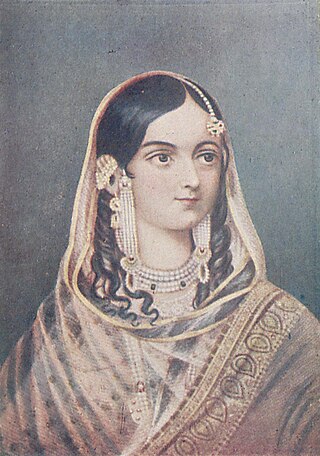
Mehar un-Nisa Begum, better known as Ghaseti Begum, was the eldest daughter of Alivardi Khan, Nawab of Bengal, Bihar and Orissa during 1740–1758.

The Sachin State was a princely state belonging to the Surat Agency, former Khandesh Agency, of the Bombay Presidency during the era of the British Raj. Its capital was in Sachin, the southernmost town of present-day Surat district of Gujarat State.

Sir Muhammad Iqbal was a South Asian Muslim writer, philosopher, scholar and politician, whose poetry in the Urdu language is considered among the greatest of the twentieth century, and whose vision of a cultural and political ideal for the Muslims of British Raj was to animate the impulse for Pakistan. He is commonly referred to by the honorific Allama.

Loharu State was one of the princely states of India during the period of the British Raj. It was part of the Punjab States Agency and was a nine-gun salute state.

Janjira State was a princely state in India during the British Raj. Its rulers were a Siddi dynasty of Habesha descent and the state was under the suzerainty of the Bombay Presidency.
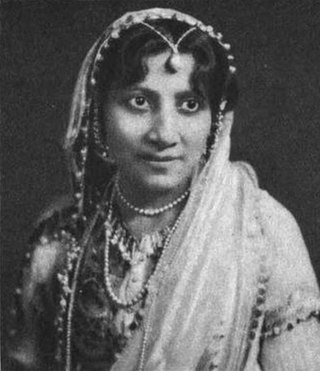
Atiya Fyzee or Atiya Fyzee-Rahamin; Atiya Begum; Shahinda; Atiya Begum Fyzee Rahamin was an Indian author and the first woman from South Asia to attend the University of Cambridge.

The Tyabji family, also known as Tyabji-Hydari,Tyabji-Fyzee, and Tyabji-Futehally family, consists of Mullah Tyab Ali and his descendants. The Tyabji family has gained fame for its exhaustive involvement in India's independence movement with individuals being prominent politicians, diplomats, academics, scientists, activists, and athletes. Other members gained prominence for their roles in India's Navy and Air Force and contribution to Indian film and fine art. Individuals within the Tyabji family belong to the Indian royal families of the Nizam of Hyderabad, the Nawab of Bengal, Raja of Wanaparthy, and the Nawab of Janjira. "The Tagores and the Tyabjis are the rarities for India and they are her friends" - Mahatma Gandhi.
Samuel Fyzee-Rahamin was an Indian painter and artist who is known as one of the founders of modern Indian painting. One of the first Indians to study at the Royal Academy of Arts in London, he rejected his western academic training to paint in a distinctly Indian style, inspired by traditional Rajasthani paintings and Mughal miniatures. He married Atiya Begum, a pioneering Muslim intellectual and feminist with whom he also collaborated creatively. Globally acclaimed by the 1920s, his most significant work was the frescoes he did on the Imperial Secretariat in New Delhi towards the end of the 1920s. Following the Partition of India, he emigrated to Pakistan with his wife where he died in poverty in Karachi in 1964.
Zehra Fyzee (1866-1940) was a writer and editor working in India in the early part of the twentieth century. She was a leading contributor to Urdu women's journals of the time.
References
- 1 2 The Curious Tale of Nazli Raffiya, The Free Press Journal, March 3, 2013.
- ↑ Contemporary Review 105 (1914), p.335
- ↑ Zafar Anjum (2014). Iqbal: The Life of a Poet, Philosopher and Politician. Random House India. p. 91. ISBN 978-81-8400-656-8.
- ↑ Rajan Mahan (1999). Women in Indian National Congress, 1921-1931. Rawat Publications. p. 171.
- ↑ Atiya Begum (2011). Ra'ūf Pārekh (ed.). Iqbal. Oxford University Press. p. 112.